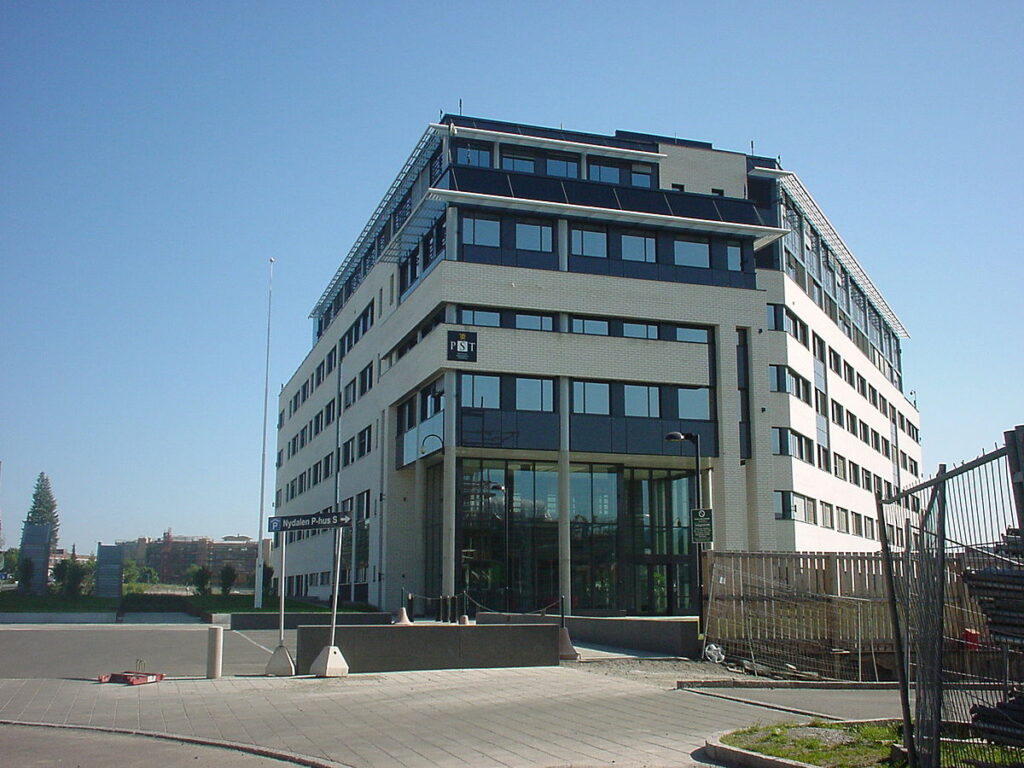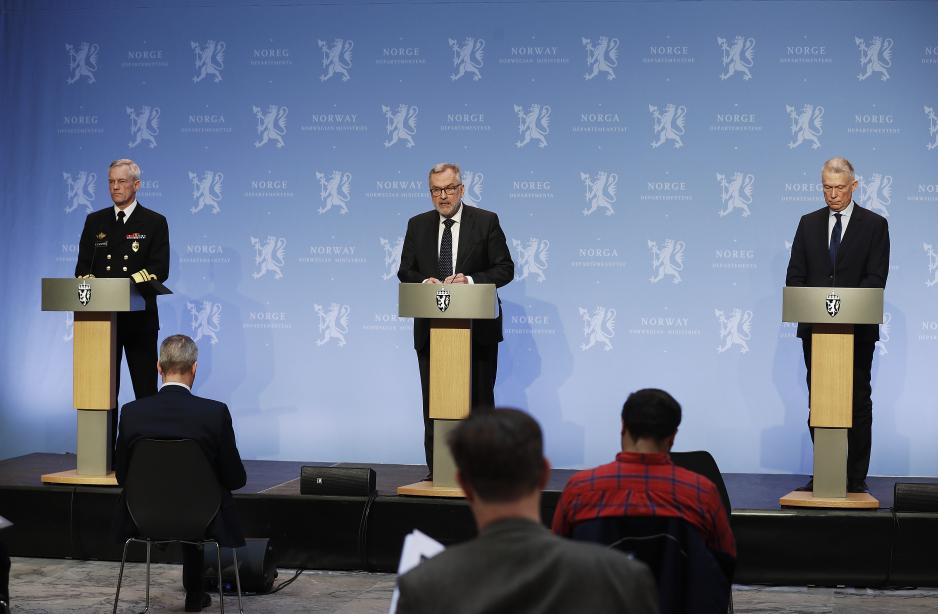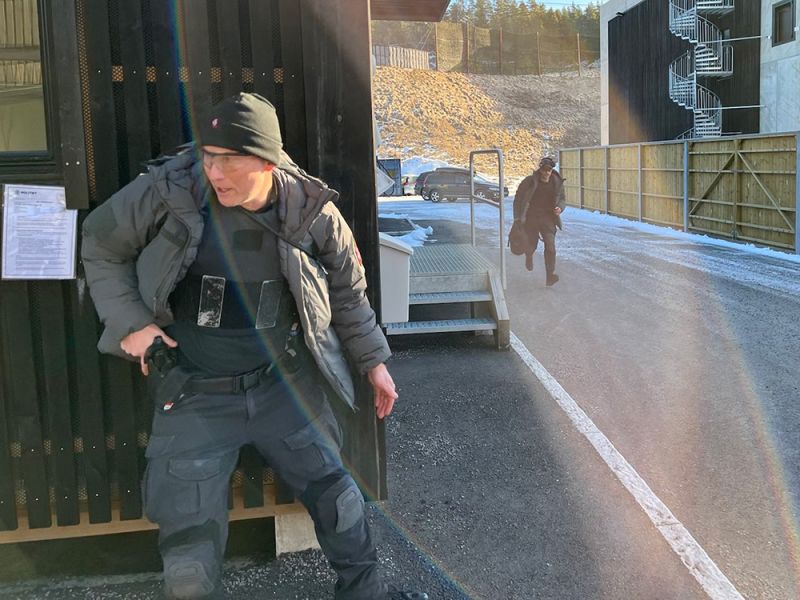Norway’s Police Security Service (PST) is the equivalent of the British Security Service (MI5). Established in 1937, the intelligence agency is responsible for counterterrorism and counterespionage in domestic settings, as well as investigating organised crime and political extremism cases that pose a serious threat to national security.
Despite its name, the institution does not operate under the National Police Directorate; instead, it reports directly to the Parliamentary Intelligence Oversight Committee and the Ministry of Justice and Public Security. Unlike Norway’s Intelligence Service, PST holds clearance to conduct surveillance within national borders.
The Sikkerhetstjeneste, as it is known in the Norwegian language, has eight departments. These include counterterrorism, investigations, tactical, security and technology. Additionally, the internal intelligence agency operates a Joint Counterterrorism Centre alongside the foreign intelligence service and the national armed forces.
1 Motto and Symbols
The Police Security Service (PST) does not have an officially published motto. Regarding its logo, the agency displays its institutional acronym under a golden lion bearing a golden crown and a silver axe. The lion is also the national coat of arms and, as such, represents both the state and the kingdom as a joint government.
2 Service History
2.1 Oslo Police Intelligence
Justice Minister Trygve Lie established a dedicated surveillance service in 1937, as the government determined that the police required a specialised body to handle internal surveillance operations. Oslo’s Chief of Police, Kristian Welhaven, took command of the new unit and led it until World War Two forced the closure of the service.
Kristian Welhaven ordered the destruction of the service’s nationwide archive during the German occupation of Norway to protect operational security. As a result, officials reorganised the Surveillance Service in 1945 using the original 1937 framework, placing a heavy focus on domestic counterintelligence.
In 1955, the command transferred the Surveillance Service from the Oslo Police to a separate administration within the service. Despite this leadership shift, local police forces continued to oversee the organisation until the Ministry of Justice ordered a major reform in 1981, solidifying the agency as a centralised and professional security service.e.
2.2 Police Surveillance Service
Under the reform package, officials completely separated the Surveillance Service from the Oslo Police and restructured it into a central police organisation under the direct control of the Ministry of Justice. The intelligence service adopted a new name: the Police Surveillance Service (POT).
During the eighties and the nineties, the agency expanded its national footprint by deploying five regional surveillance centres–Eastern Norway, Southern Norway, Western Norway, Trøndelag, and Northern Norway-–as well as the main surveillance headquarters in the capital. By the end of the century, the service splintered into seven regional divisions.
The Police Reform 2000 Act, which took effect on 1 January 2002, forced the service to reform again by reducing the number of police districts from 54 to 27. At the same time, officials restructured and renamed the Police Surveillance Service (POT) as the Police Security Service (PST), following the recommendations of an internal audit known as the Lund Report.

3 Organisation
3.1 Place in Government
Norway’s Intelligence Community (EOS) comprises the Police Security Service (PST), the National Security Authority (NSM), the Norwegian Intelligence Service (NIS), and the Norwegian Defence Security Department (NORDSD). Authorities collectively refer to these agencies as the EOS, naming them after the parliamentary committee that oversees intelligence matters and national security.
Under the Oversight of Intelligence, Surveillance, and Security (EOS), the Police Security Service (PST) serves as Norway’s domestic security and intelligence service. Unlike the other agencies in the community, PST holds the authority to conduct targeted surveillance within the national border against both citizens and foreigners suspected of espionage or terrorism.
3.2 Command Structure
The Police Security Service is directly subordinate to the Ministry of Justice in terms of police and administrative matters. Investigation and prosecution matters for the Police Security Service are regulated in the Criminal Procedure Act. The Ministry of Justice lays down further provisions on organisational issues for the service, cf. Section 16 of the Police Act.
Beate Gangås is the current head of the intelligence service, with Inga Bejer Engh as second in command and Ann Kristin Roheim as staff director. The Sikkerhetstjeneste headquarters in Oslo includes these positions as part of its general staff, and the Police Act Section 19 subjects some of them to a six-year fixed term.
[source]
3.3 Departments and Divisions
The Police Security Service (PST) operates with one headquarters division, eight operational departments, and one communications directorate. Counterintelligence and Non-Proliferation, Counterterrorism Department, Tactical Acquisition and Security Detail responsibilities focuses on the operational angle of the security service, as their names indicate.
Meanwhile, the other four departments–Technology and Innovation, Emergency Preparedness, Shared Services, and Investigation / Prosecution–serve as a backbone for logistics and have responsibilities that range from human resources and personnel coordination to tradecraft development and institutional liaison.
3.4 Personnel Recruitment
The Sikkerhetstjeneste posts vacancies through the official social media accounts of the intelligence services. According to official sources, the process involves an initial interview and background checks during the first steps. Candidates who advance are submitted to an academic review and personality assessments.
After obtaining security clearance from the National Security Authority (NSM), the officers on probation receive guidance on how to handle social media, online communities, and social situations. Normally, the intelligence service assigns newcomers a senior mentor and a junior partner to help them navigate the onboarding process.
Vacancies in the service include computer engineers and system developers, as well as others with experience in automation electronics, religious history, linguistics studies or telecommunications. Additionally, former members of the armed forces or other government law enforcement agencies are also required by the security service to undisclosed positions.
[source]

4 Tactical-Operational Information
4.1 Operations
Operations regarding intelligence are considered classified by law in Norway. However, some prosecutions regarding counterintelligence and counterespionage were declassified and passed to the media after the security service made an arrest. Among the publicly known operations are the detention of several Russian citizens in 2022, suspected of planning to sabotage critical infrastructure.
In another case, authorities detained a visiting academic on suspicion of spying. Mikhail Mikushin, a Russian foreign national, entered Norway using a fake identity as a Brazilian lecturer at the Arctic University of Norway, but the domestic agency arrested him shortly afterwards. In 2021, officials also interrogated a worker from the United States Embassy in Norway on suspicion of espionage.
[source]
4.2 Core Purpose
Norway’s domestic police intelligence and security service. Its responsibilities include collecting and analysing information and implementing countermeasures against matters that threaten national security. The service is organised as a special police service parallel to the regular police, and the service reports directly to the Ministry of Justice.
4.3 Tactics
Officers from the Police Security Service (PST) gather critical information on domestic threats using covert and overt methods. Section 6 of the Police Act states that authorities may use “illegal methods,” such as intercepting communications through listening devices or exploiting clandestine human sources without a court order, when operating in public settings or conducting preventive activities.
More casual methods of collection, such as physical surveillance via highly mobile units or from fixed observation posts, are also used by the service. Databases, like phone records or travel histories, are also exploited. The Police Register Act, Section 65 gives the domestic service a clear mandate on the exploitation of publicly available information for security purposes.
4.4 Personnel Size
Twenty years ago, official data showed that a total of 235 officers worked in the intelligence agency. Since then, authorities have classified the manpower numbers of the Police Security Service (PST) and the officers’ salaries under a local information act. Unconfirmed reports estimate that around 3,000 individuals work in the Norwegian Intelligence Community.
[source]

5 Conclusion
The Police Security Service (PST) plays a vital role in safeguarding Norway’s internal security and democratic integrity. Since its establishment in 1937, the agency has evolved from a small surveillance unit under local police control into a professional and centralised intelligence organisation directly under the Ministry of Justice. With a clearly defined mandate to counter threats such as terrorism, espionage, political extremism, and organised crime, the Sikkerhetstjeneste operates with investigative authority and operational autonomy to use covert methods and targeted surveillance within national borders. Through its complex departmental structure, strategic partnerships, and integration into the broader Norwegian Intelligence Community (EOS), the service ensures a proactive approach to modern security challenges.